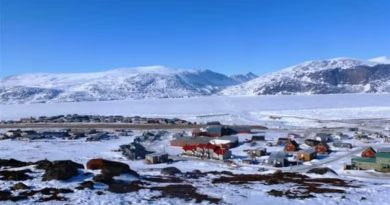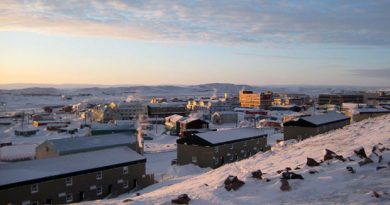Poles being installed in some areas for Dempster fibre line, Yukon gov’t says
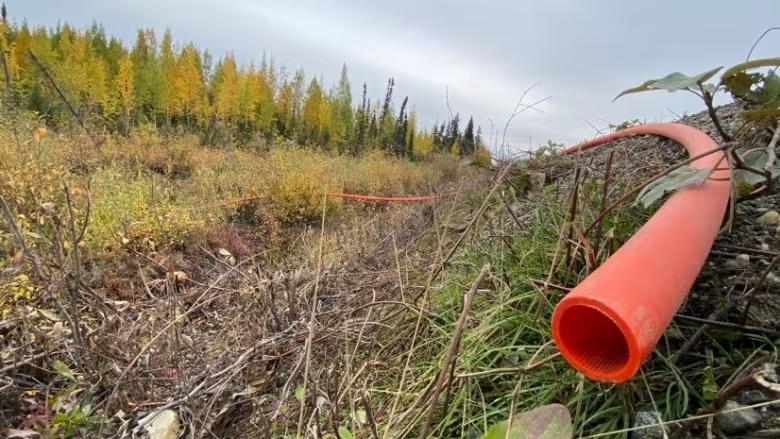
One Yukon resident decries ‘seeing our spectacular pristine wilderness landscape being transformed’
The Yukon government says it’s installing new poles alongside the remote Dempster Highway for the territory’s new fibre optic line, and at least one nearby resident is surprised and “absolutely dismayed” by the sight.
“I’m … angry for sure, and very sad at seeing our spectacular pristine wilderness landscape being transformed with these poles that are being slung up … as well as wires that are going to be strung between the poles,” said Dawson City, Yukon, resident Joanne Devenish.
“There’s lots of polls that are going up and I do not feel that the government has been transparent.”
The Dempster Fibre Project involves the installation of an 800-kilometre fibre optic line to connect the Yukon to the existing Mackenzie Valley Fibre Link at Inuvik, N.W.T. The new line will give Yukon another broadband connection to the rest of the world and will be completed in 2024, the government says.
Devenish, who says she’s been regularly driving up and down the Dempster Highway for the last 25 years, said she counted 26 poles where the highway goes through Yukon’s Tombstone Territorial Park.
She says she’s not against the fibre project, but feels blindsided by how it’s happening. The project description submitted to Yukon’s environment assessment board wasn’t clear about the need for newly-installed poles, she argues.
“There’s no mention of how many [poles], there’s no … mention of the extent of how many will be placed,” she said.
“I feel that the Yukon government is selling us out as Yukoners … to place these polls up to the Northwest Territories.”
Various methods of installation
The project proposal submitted to the Yukon Environmental and Socio-Economic Assessment board in 2019 describes the various methods that would be used to install the new line from Dawson City to Inuvik.
The plan calls for long sections to be buried alongside the highway, while other sections would run along the ground. The plan also describes how the line might be attached to some existing bridges along the way.
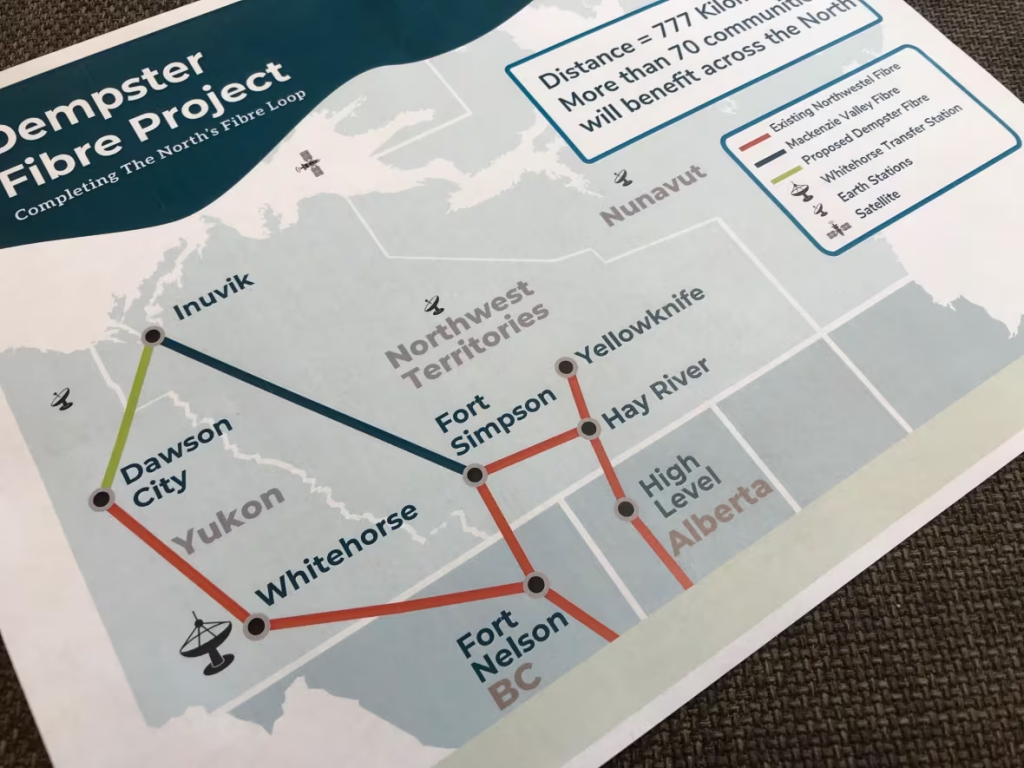
Horizontal directional drilling (HDD) — a relatively expensive technique for running a cable under a road or waterway — would also be used in some areas. According to the project’s 2022 annual report, HDD was used last summer at the Arctic Red River, Peel and the Mackenzie River.
Aerial installation of cable would also be used in some sections, including alongside the Klondike Highway from Dawson City to the south end of the Dempster. The line would be attached to Yukon Energy’s existing power poles on that stretch, the plan says.
“Existing poles will be used whenever possible,” it states.
Priyank Thatté, director of sustainable infrastructure for the Yukon government’s department of Highways and Public Works, says part of the ongoing project involves figuring out what makes sense where, to minimize environmental and cultural impacts.
“On this project there are a number of installation methods because the geography and the terrain varies so much,” he said.
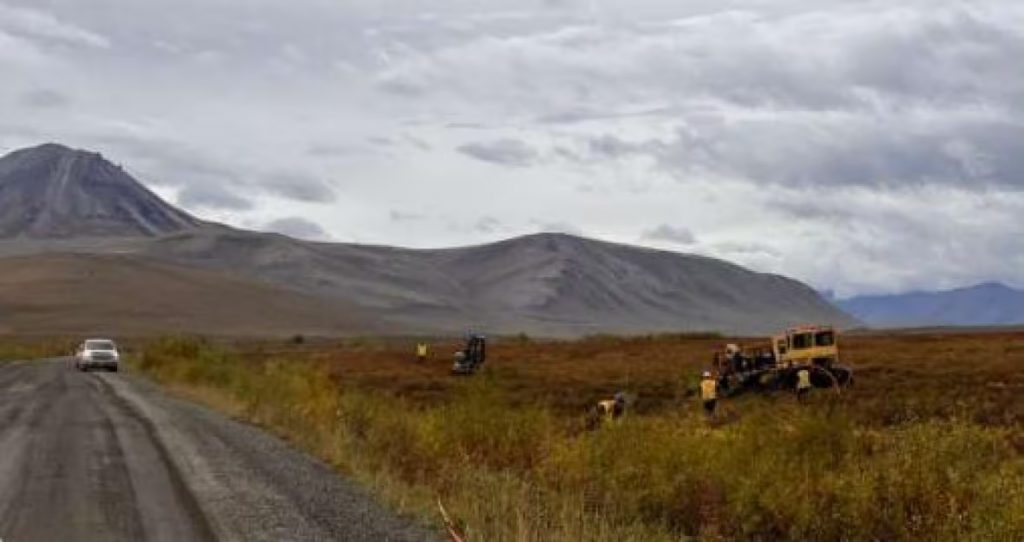
He said a team of geotechnical experts, permafrost researchers and other consultants examines an area to determine which is the best method, and that aerial installation — erecting new poles — is always a last-resort option.
“[When] the rock is either too hard to drill, and if you drill, it will shatter which will destabilize the whole highway and the whole region. Or the ground is like, very soft, sandy, so if you drill the hole, the conduit just collapses on itself … in those instances, the only option left is to go aerial.”
Thatté said initial estimates for the project called for about 66 kilometres of aerial installation, but with the work now underway, that’s been whittled down to an estimated five kilometres.
“That’s in large part [due] to this multidisciplinary team we have to tackle complex problems,” he said.
Thatté admitted that the new poles are a bit of an “eyesore.”
“While these might appear large, technically they are classified as small light poles,” he said.
Related stories from around the North:
Canada: $123.9 million additional funding announced for high-speed internet in Arctic Quebec, Eye on the Arctic
Norway: New satellites to boost communications in Arctic Norway, The Independent Barents Observer
Russia: Russian military to get fast, secure internet through trans-Arctic cable, The Independent Barents Observer
United States: $30.3 million grant announced to build up high-speed internet in rural Alaska, Eye on the Arctic

